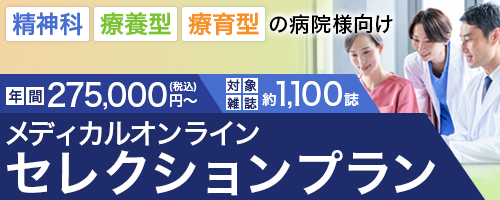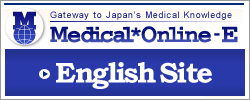アブストラクト
Japanese
| Title | COVID-19肺炎患者に対して気管切開を施行した症例の術後管理について |
|---|---|
| Subtitle | 症例 |
| Authors | 大久保啓介1), 井上卓2),3), 深田理佳3), 菅野雄紀1), 平野俊之2), 南隆二1), 笠原健4) |
| Authors (kana) | |
| Organization | 佐野厚生総合病院 1)耳鼻咽喉科, 2)内科, 3)感染対策室, 4)川崎市立川崎病院 耳鼻咽喉科 |
| Journal | 日本気管食道科学会会報 |
| Volume | 71 |
| Number | 6 |
| Page | 426-433 |
| Year/Month | 2020 / |
| Article | 報告 |
| Publisher | 日本気管食道科学会 |
| Abstract | 「要旨」症例は65歳男性. 流行早期にCOVID-19肺炎のため当院に搬送後, 第4病日に気管挿管および人工呼吸器管理となった. 呼吸状態は改善せず第16病日に病棟陰圧室で気管切開を施行した. 気管切開チューブは二重管タイプを用いた. 術後感染対策チームの指示によって適切に標準予防策とエアロゾル感染に対する付加的予防策を行った. 術後は徐々に呼吸状態が改善し, 第35病日に人工呼吸器から離脱した. 第38病日に気管切開チューブをスピーチタイプに変更し, 第45病日に気管切開チューブを抜去した. また気管切開術後は食支援のためにKTバランスチャートによる包括的評価を行い, 第22病日より楽しみ程度の摂食を開始した. 計画に基づいて摂食嚥下リハビリテーションを行ったところ経口摂取がすすみ, 第40病日に経鼻胃管を抜去した. 経過中に病院職員や入院患者への院内感染は認めなかった. COVID-19肺炎患者における気管切開術後の感染リスク管理は, 感染経路として接触感染, 飛沫感染およびエアロゾル感染への対応が重要である. 二重管タイプの気管切開チューブはチューブ交換などのエアロゾル発生手技を減少させるために有用と考えられた. |
| Practice | 臨床医学:一般 |
| Keywords | 新型コロナウイルス感染症, 気管切開, エアロゾル感染, 二重管気管切開チューブ, 摂食嚥下リハビリテーション, coronavirus disease 2019, tracheostomy, aerosol infection, dual cannula tube, dysphagia rehabilitation |
English
| Title | Postoperative Management of Tracheostomy for COVID-19 Pneumonia Patients |
|---|---|
| Subtitle | Case Report |
| Authors | Keisuke Okubo1), Takashi Inoue2),3), Rika Fukada3), Yuki Sugano1), Toshiyuki Hirano2), Ryuji Minami1), Ken Kasahara4) |
| Authors (kana) | |
| Organization | 1)Department of Otolaryngology, 2)Department of Internal Medicine, 3)Infection Control Team, Sano Kosei General Hospital, and 4)Department of Otolaryngology, Kawasaki Municipal Hospital |
| Journal | The Journal of the Japan Broncho-Esophagological Society |
| Volume | 71 |
| Number | 6 |
| Page | 426-433 |
| Year/Month | 2020 / |
| Article | Report |
| Publisher | The Japan Broncho-esophagological Society |
| Abstract | We report the case of a 65-year-old male who was admitted to our hospital for COVID-19 pneumonia in the early stage of the epidemic. He was treated with tracheal intubation and mechanical ventilation on the 4th day in hospital. His respiratory function did not improve, however, and a tracheostomy was performed in the hospital's negative pressure room on the 16th day in hospital. A dual cannula tube was used for the tracheostomy tube. Management after surgery was performed with the appropriate standard precautions and additional precautions against aerosol infections in consultation with an infection control team. After surgery, the patient's respiratory condition improved and he was removed from the ventilator on the 35th day in hospital. The tracheostomy tube was changed to the speech type on the 38th day, and the tube was removed on the 45th day. In addition, after the tracheostomy a comprehensive evaluation was performed using the Kuchi-kara Taberu (KT) index to assess dysphagia rehabilitation, and on the 22nd day in hospital a small amount of food intake was started. After undergoing swallowing rehabilitation based on a plan, the nasal tube was removed on the 40th day. No nosocomial infections were observed in our medical staff or hospitalized patients during the course. For infection risk management after tracheostomy in patients with COVID-19 pneumonia, it is important to prevent contact infection, droplet infection and aerosol infection as the routes of infection. A dual cannula tube is considered useful for reducing aerosol generation during procedures such as tube replacement. |
| Practice | Clinical medicine |
| Keywords | coronavirus disease 2019, tracheostomy, aerosol infection, dual cannula tube, dysphagia rehabilitation |
- 全文ダウンロード: 従量制、基本料金制の方共に770円(税込) です。
参考文献
- 1) Zhu N, Zhang D, Wang W, et al: A novel coronavirus from patients with pneumonia in China, 2019. N Engl J Med 382:727-733, 2020.
- 2) Chen N, Zhou M, Dong X, et al: Epidemiological and clinical characteristics of 99 cases of 2019 novel coronavirus pneumonia in Wuhan, China: a descriptive study. Lancet 395:507-513, 2020.
- 3) World Health Organization: Transmission of SARS-CoV-2: implications for infection prevention precautions 9 July 2020. https://www.who.int/news-room/commentaries/detail/transmission-of-sars-cov-2-implications-for-infection-prevention-precautions
- 4) Tran K, Cimon K, Severn M, et al: Aerosol generating procedures and risk of transmission of acute respiratory infections to healthcare workers: a systematic review. PLoS ONE 7:e35797, 2012.
- 5) 日本耳鼻咽喉科学会:気管切開(2020年6月16日改訂,第二版).http://www.jibika.or.jp/members/information/info_corona_0617_06.pdf
残りの9件を表示する
- 6) McGrath BA, Brenner MJ, Warrillow SJ, et al: Tracheostomy in the COVID-19 era: global and multidisciplinary guidance. Lancet Respir Med 8(7):717-725, 2020.
- 7) Hiramatsu M, Nishio N, Ozaki M, et al: Anesthetic and surgical management of tracheostomy in a patient with COVID-19. Auris Nasus Larynx 47:472-476, 2020.
- 8) Maeda K, Shamoto H, Wakabayashi H, et al: Reliability and validity of a simplified comprehensive assessment tool for feeding support: kuchi-kara taberu index. J Am Geriatr Soc 64(12):248-252, 2016.
- 9) 小山珠美:KT(口から食べる)バランスチャートによる包括的評価.小山珠美編,口から食べる幸せをサポートする包括的スキル第2版,pp.12-19,医学書院,東京,2017.
- 10) 小山珠美:震災による避難所での二次的合併を回避するKTバランスチャートを使用した包括的食支援の実際.リハビリテーション栄養 4:72-75, 2020.
- 11) National confidential enquiry into patient outcome and death: Tracheostomy care: On the right trach? 13 June 2014. https://www.ncepod.org.uk/2014tc.html
- 12) Standards for the care of adult patients with a temporary tracheostomy: Standards and guidelines: Tracheostomy care intensive care society standards 2014. https://www.theawsomecourse.co.uk/ICS/ICS%20Tracheostomy%20standards%20(2014).pdf
- 13) 日本医療安全調査機構:医療事故の再発防止に向けた提言第4号:気管切開術後早期の気管切開チューブ逸脱・迷入に係る死亡事例の分析.日本医療安全調査機構,東京,2018.6.
- 14) Centers for Disease Control and Prevention: Recommended guidance for extended use and limited reuse of N95 filtering facepiece respirators in healthcare settings 27 March 2020. https://www.cdc.gov/niosh/topics/hcwcontrols/recommendedguidanceextuse.html



